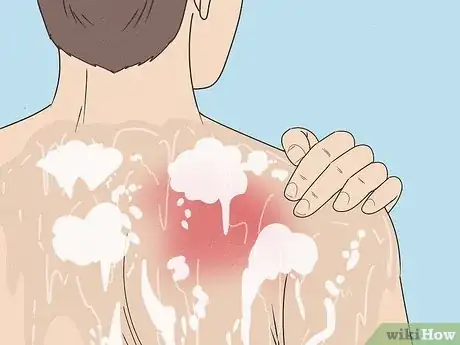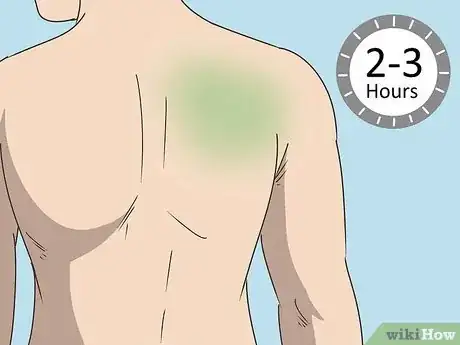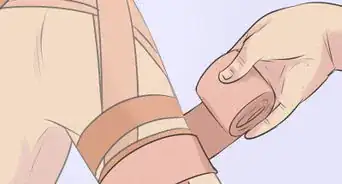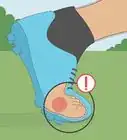This article was co-authored by wikiHow staff writer, Hannah Madden. Hannah Madden is a writer, editor, and artist currently living in Portland, Oregon. In 2018, she graduated from Portland State University with a B.S. in Environmental Studies. Hannah enjoys writing articles about conservation, sustainability, and eco-friendly products. When she isn’t writing, you can find Hannah working on hand embroidery projects and listening to music.
This article has been viewed 18,531 times.
Learn more...
Icy Hot is great at tackling muscle aches and pains, but what about when it hurts more than it helps? If you applied Icy Hot and it’s itching or burning, getting it off quickly is probably your top priority. In this article, we’ll tell you exactly how to wash Icy Hot off fast for instant relief. We’ll also share some safety information and general facts about Icy Hot to prevent irritation in the future.
Things You Should Know
- Wash Icy Hot off quickly by using soap and warm water. If that doesn’t help, dip a cotton ball in olive oil and use it to neutralize the Icy Hot.
- Icy Hot usually lasts for 2 to 3 hours.
- Using too much Icy Hot can have adverse effects, so be sure to follow the dosage instructions on the package.
- Limit applications to 3-4 times daily. Avoid putting Icy Hot on sunburned or irritated skin.
Steps
Warnings
- In rare cases, Icy Hot can cause chemical burns. If your skin is red, blistered, or rashy for more than a day, make an appointment with your doctor.⧼thumbs_response⧽
References
- ↑ https://www.mayoclinic.org/drugs-supplements/capsaicin-topical-route/side-effects/drg-20062561?p=1
- ↑ https://www.icyhot.com/en-us/products/creams-rubs/pain-relief-cream
- ↑ https://consumermedsafety.org/drug-interactions-reactions-allergies/beware-of-adverse-effects-when-using-medicines-applied-to-the-skin
- ↑ https://www.icyhot.com/en-us/products/creams-rubs/pain-relief-cream
- ↑ https://www.drugs.com/mtm/icy-hot.html
- ↑ https://www.icyhot.com/en-us/products/creams-rubs/pain-relief-cream



























































Medical Disclaimer
The content of this article is not intended to be a substitute for professional medical advice, examination, diagnosis, or treatment. You should always contact your doctor or other qualified healthcare professional before starting, changing, or stopping any kind of health treatment.
Read More...